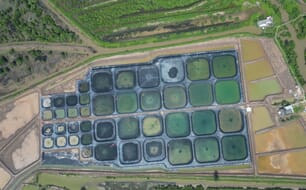The presentations showed that, in terms of the market for seaweed, there is a big demand from a range of sectors. At present, seaweed can be used for:
- Food
- Fish feed
- biofuel
- production of green chemicals
- as an industrial thickener
In terms of biofuels, seaweed has a great potential as a biogas. Jorunn Skjermo noted in her presentation that the Tokyo Gas Company produces around 22m3 of methane from 1 ton of seaweed a day. Seaweed in Japan also provides 30 per cent of the country's transport fuels.
As a feed, seaweed cannot be fed directly to fish, but, it can be used as an addition to pre-mix, helping to provide around 10 to 15 per cent of a fish's dietry proteins.
Although the presentations noted that growth of the seaweed industry is expected, there is still much more work to be done around the cost of seaweed production. In his presentation, Sander van de Burg pointed out that some research points to the estimated cost of production being €71 per tonne where as another piece states costs of over 10,000 per tonne, showing that there is still a knowledge gap.
Mr Burg pointed out that costs can be reduced in seaweed aquaculture by improving the production system, for example, by using an Intergrated Multi-trophic Aquaculture system (IMTA).
An investigation by Silje Forbord looked at how well seaweed grew in a IMTA system in Norway. Grown alongside a salmon farm, the study showed that seaweed which could utalise waste nutrients from the salmon farm grew 50 per cent bigger than the seaweed which was not grown in an IMTA system.
This research also showed that in the IMTA system, the seaweed grew best at a depth of eight meters and grew most between the months of February and June, which correlated with day legnth.
In conclusion, there seems to be a good argument to expanding seaweed aquaculture. Although much more research is needed, seaweed can help towards a more sustainable future both through its use as a biofuel and through IMTA.
You may also be interested in:





